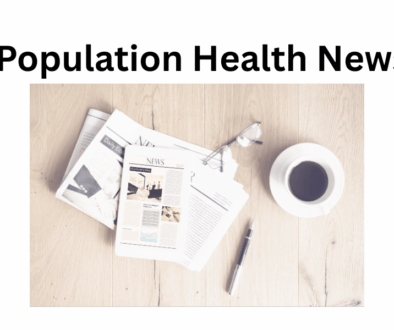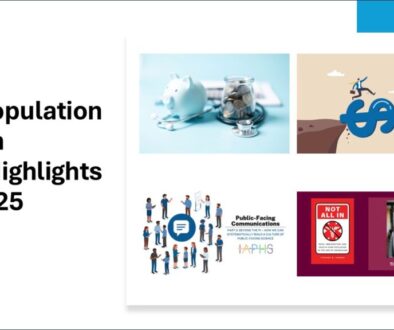Employment Shapes Health and Health Disparities—and Why Population Health Scientists Should Care
Sarah BurgardI have long been interested in what people do all day–and why–and how it affects them. Studs Terkel’s book Working fascinated me when I was younger, and when I got my hands on the American Time Use Survey data for the first time, I had to tear myself away after scrolling for hours through those 24 hour daily diary records. Research with my collaborators has increasingly come to center on the evolving role of employment – which stands among the major players in what we do all day – in shaping the health of people and populations. Here I note some reasons why the population health community should think about how employment and work fit into their own research puzzles. None of these are novel ideas, but it’s useful to put them together as a reminder.
As population scientists, we need to think of employment as more than a paycheck, and more than a binary variable
I’d argue that we should include employment and work experiences among the key social determinants of health, perhaps more often than we currently do. Much of the excellent social and health science research in recent decades as taken socioeconomic position very seriously, but many studies have focused on measures of education or income. Education arguably prepares people for employment, and income, or other forms of financial well-being, are important consequences of employment for most. The emphasis is understandable – those are already strong policy targets, and easy to measure in a way that is comparable across populations and time. However, employment does more than simply connect education to income over the life course; it also brings with it physical, environmental, and psychosocial exposures that can vastly differentiate the lives of people with similar levels of education and income. Moreover, the links between these experiences of workers and their health can also be strongly modified by policy choices that vary greatly across time and space.
Across the life course, work matters even when we are not doing it.
Thus, employment is more than simply whether someone is currently working for pay. There is vast heterogeneity among those in the “employed” category. Moreover, we need to consider how employment is relevant for every person, even if they are not currently working for pay. Across the life course, work matters even when we are not doing it. Our schooling choices are shaped by what we hope to do after we graduate, and our retirement possibilities are strongly impacted by what happened with employment in midlife. Families make paid and unpaid work tradeoffs as a collective, so other people’s employment affects us, from that of our parents to that of our children. And finally, the meaning, experience, and consequences of employment vary strongly by the social identities that stratify our societies, with those who have less power often subject to the burden of underemployment, poor working conditions, and a greater struggle to manage paid work along with other unpaid and often gendered duties.
We know a great deal, but need a more collaborative, interdisciplinary lens
There have been countless excellent studies of the consequences of all types of employment-related exposures on various dimensions of health, most generated by a range of subfields including occupational psychology, the sociology of work, medical anthropology, occupational epidemiology, labor economics, comparative politics, and the list goes on. We often read research mainly within our own subfield, and there are often strong disciplinary sanctions if we do not. However, this can lead to the phenomenon of scholarly ships passing in the night, because different disciplines bring very different guiding conceptual models, data sources, and intellectual priorities to the table.
But if we stay in our own disciplinary lanes, the data sources, conceptual models, and levels of analysis we focus on may be unnecessarily restricted.
An illustrative example is the science on recessions and health. As is now much more well known, a long tradition in economics has shown that life expectancy has generally risen when the unemployment rate rises, while a long tradition in sociology and epidemiology (my own fields) has focused on the negative health consequences of the kinds of crises that happen in recessions: job losses, long-term unemployment, greater burdens on those who survive layoffs, and the like. Of course both patterns can coexist, as my coauthor and I detail in a recent review. But if we stay in our own disciplinary lanes, the data sources, conceptual models, and levels of analysis we focus on may be unnecessarily restricted. And our conclusions and recommendations may be incomplete.
Employment policy is population health policy
As we consider levers to address population health disparities, we should consider employment policies, and the way they intersect with immense demographic and social shifts. In the United States, for example, we’ve experienced a long-term trend of educational expansion, but one that may not be met by equal growth in good jobs. Continuing to prioritize educational policy is essential, but it is important to consider how a growing gap between good and bad jobs could undo some of the equalizing benefits of expanded educational attainment across the population.
As another example, the aging of the population means that unless there are major revisions to the standard retirement age, people will be spending a longer portion of lives out of the paid labor force, and benefiting or suffering from the legacies of unequal working lives. It is critical that we consider how workplace policies like parental leave, job sharing, flexible schedules, and other innovations could help to make employment actually work for contemporary families. However, we also need to more carefully study how workforce policies and programs–from the unemployment insurance and social security systems, to job creation or retraining programs, to work requirements for social welfare programs, to policies that address a globalizing labor market–are shaping population health and health disparities.





All comments will be reviewed and posted if substantive and of general interest to IAPHS readers.